Power Query: Passing Through Parameters
9 August 2017
Welcome to our Power Query blog. Today I look at filtering for parameters.
Last week, in In Terms of Conditional Columns, I looked at how parameters were a possible source when defining conditional columns. This week, I take a closer look at parameter creation by using a parameter in a filter.
Parameters allow me to enter limits into a calculation or query. If I choose to only show data where the value in my date column matches a parameter, then only data corresponding to the parameter value will be shown. I can then change the parameter to alter the filter.
I am going to show how to create a parameter using the menu options in the Power Query editor. I begin by entering a new parameter and investigating my options. I can do this from the query editor by choosing the ‘Home’ tab and picking ‘New Parameter’ from the ‘Manage Parameters’ dropdown in the ‘Parameters’ section.
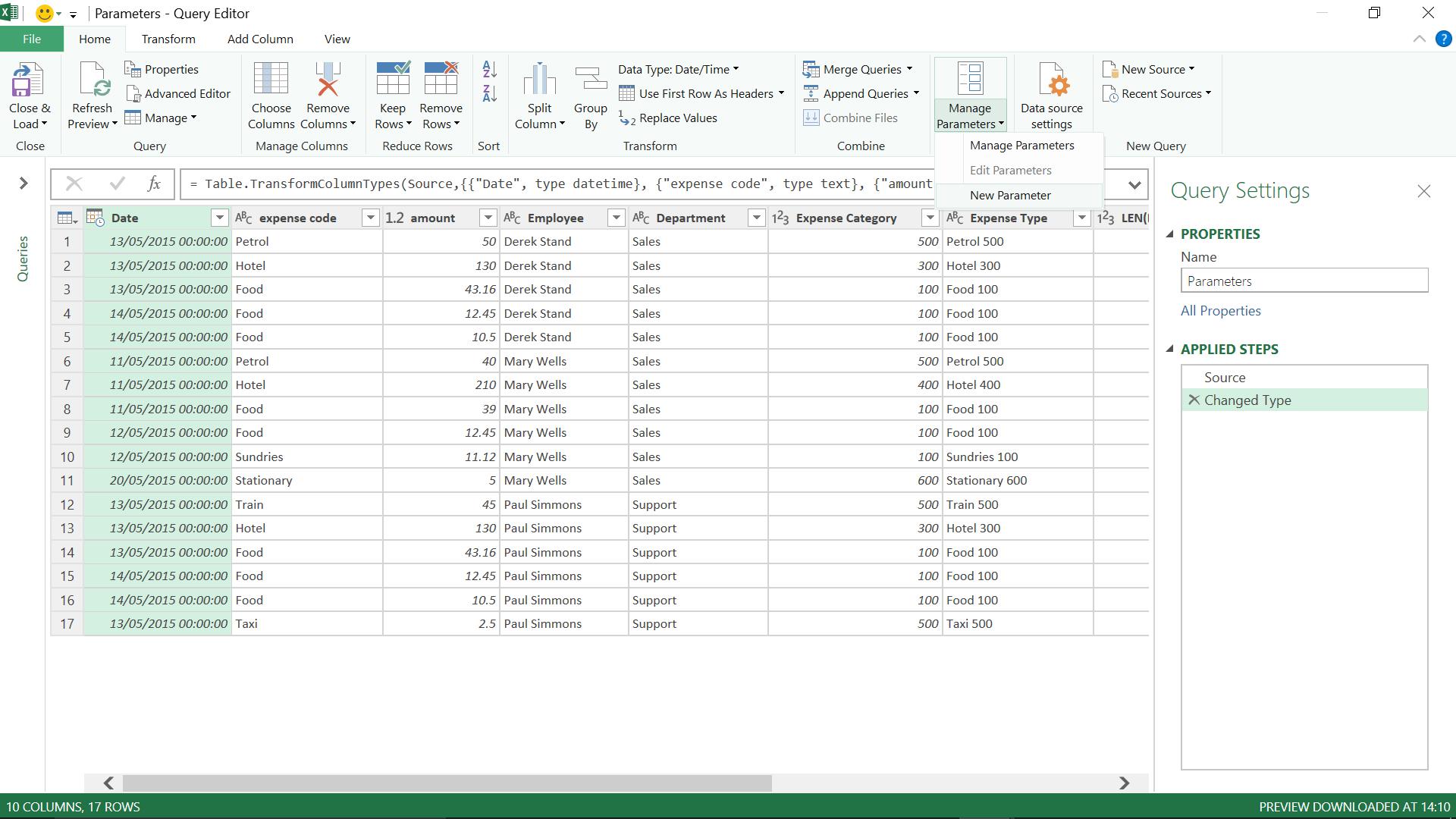
Sticking with my date theme, I choose to create a parameter that I can use as a date filter. I specify ‘Date/Time’ to match the data in my Date column. The other data types available are shown in the dropdown in the screen below:
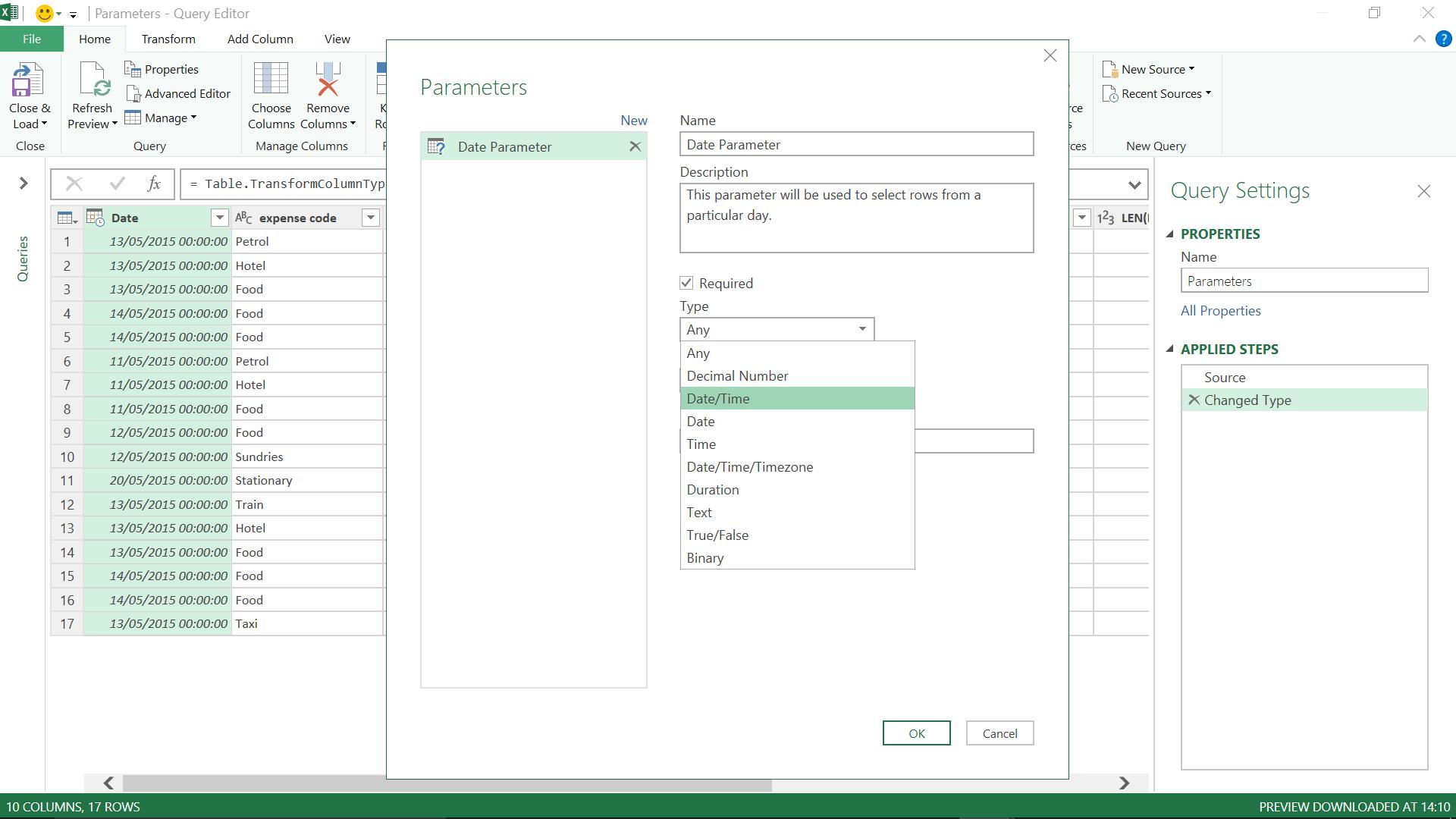
The ‘Required’ box determines if this parameter must always be populated: if it is ticked then the ‘Current Value’ must be specified. The next box, ‘Suggested Values’, defines what can be entered into my parameter. The first option, ‘Any value’, is obvious enough; the other options need a little more explanation.
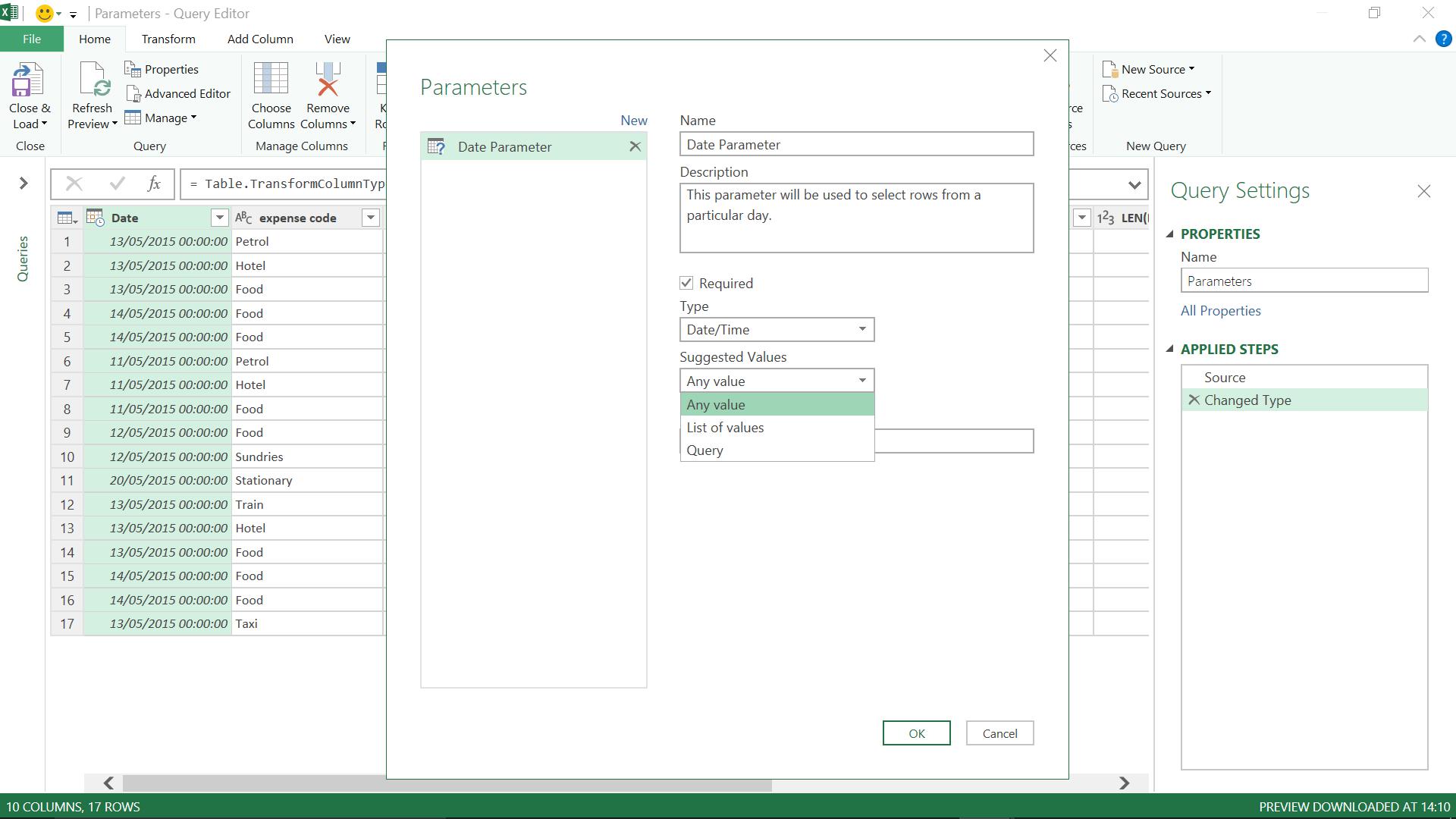
If I choose to only allow a parameter selected from a list (‘List of values’), I can limit the options that can be entered into my parameter by creating a list as shown below:
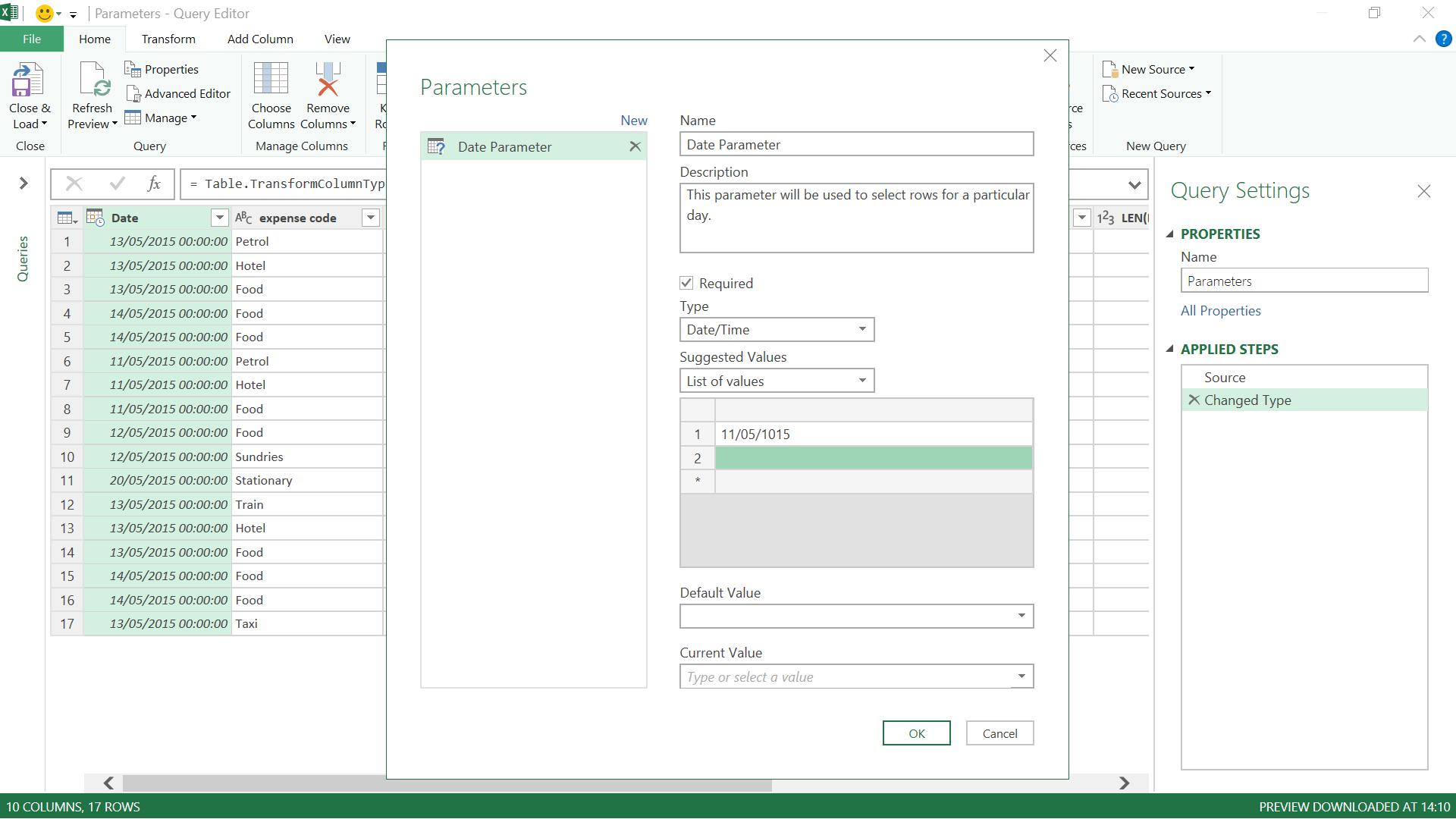
This could help to prevent me from entering a value that wouldn’t link to any rows. I can also use a query to determine my subset of dates, but it must have been created prior to me creating my parameter.
In order to have something available in this ‘Query’ option, I need to enter a list query, i.e. a query that will return a list of values, in this case dates. I could create a list using M code, but since I want to create a list of the dates that have data from my query associated with them, I will create the list from my Excel data here.
I create a new query from the Excel data and delete everything except the date column. On the ‘Transform’ tab, there is an option in the ‘Any Column’ section to convert a column to a list, called ‘Convert to List’, as shown below:
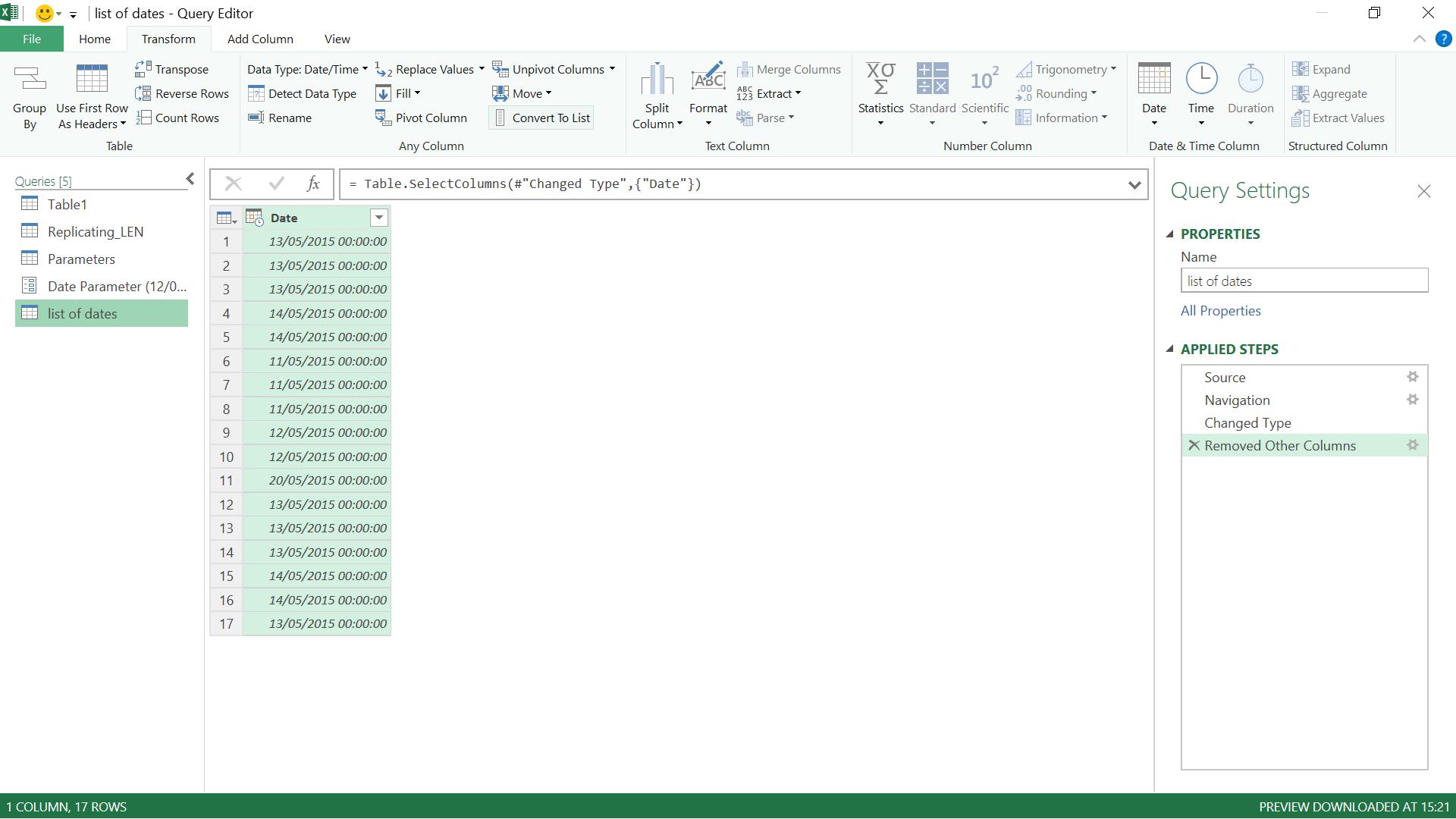
When I click on ‘Convert to List’, the view changes and the icon for my query changes to a list viz.
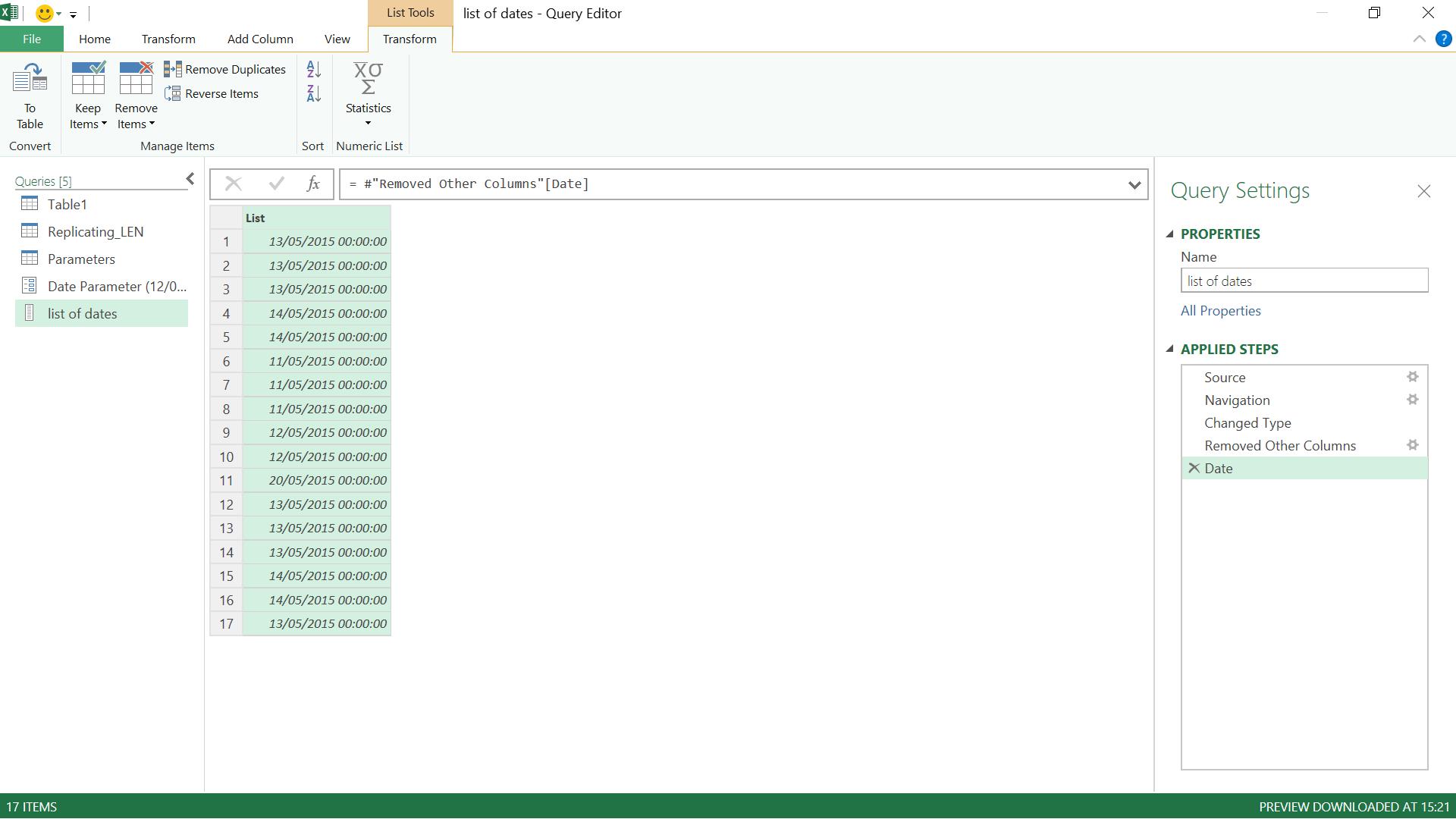
My list is not yet finished: I have dates appearing multiple times in random order. I can tidy up my list by applying a sort and removing duplicates as shown below:
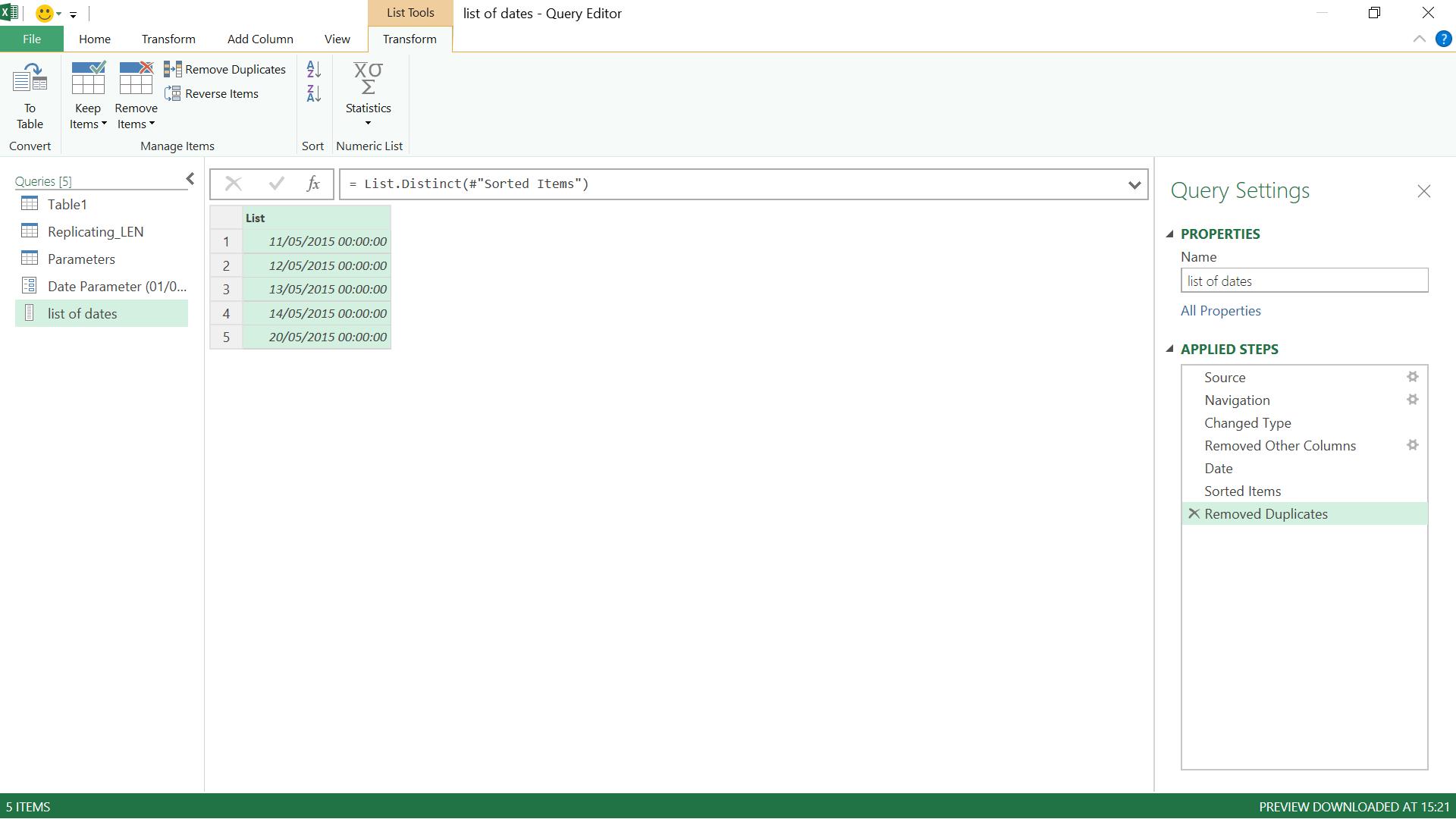
My list query is now available for me to select when creating or editing my parameter.
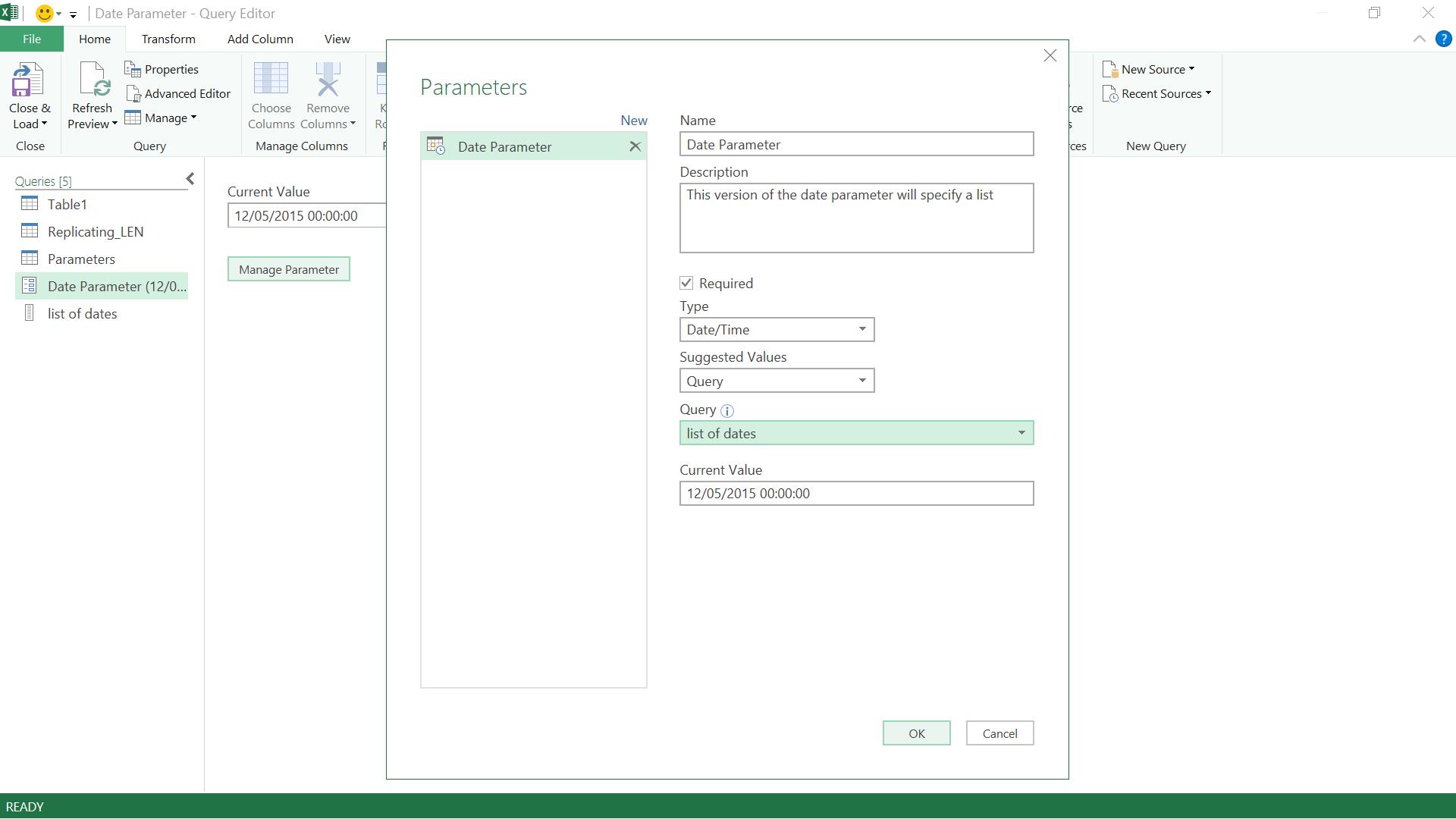
Therefore, I can either create a parameter that accepts any value or have a parameter that will only allow values on a list, whether that is a manually created list in my ‘Parameters’ screen or via a list query. To see how the parameter can be used in a filter, I begin with the first ‘Suggested Values’ option, the ‘Any value’ option:
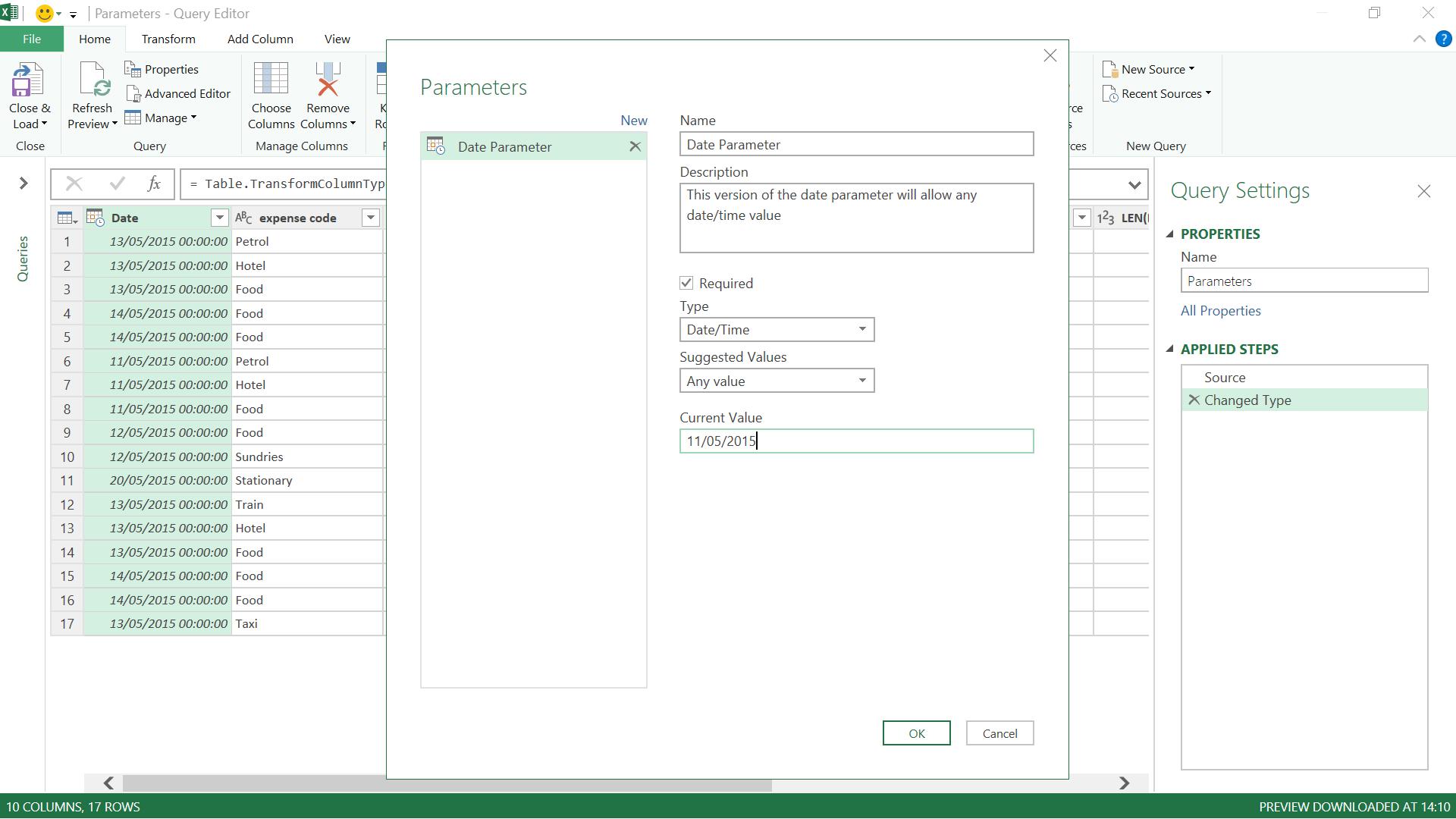
In order to use my parameter to filter my data, I need to go to the filter icon next to my Date column, where I find a ‘Date/Time Filters’ dropdown and pick the ‘Custom Filter’ option at the bottom.
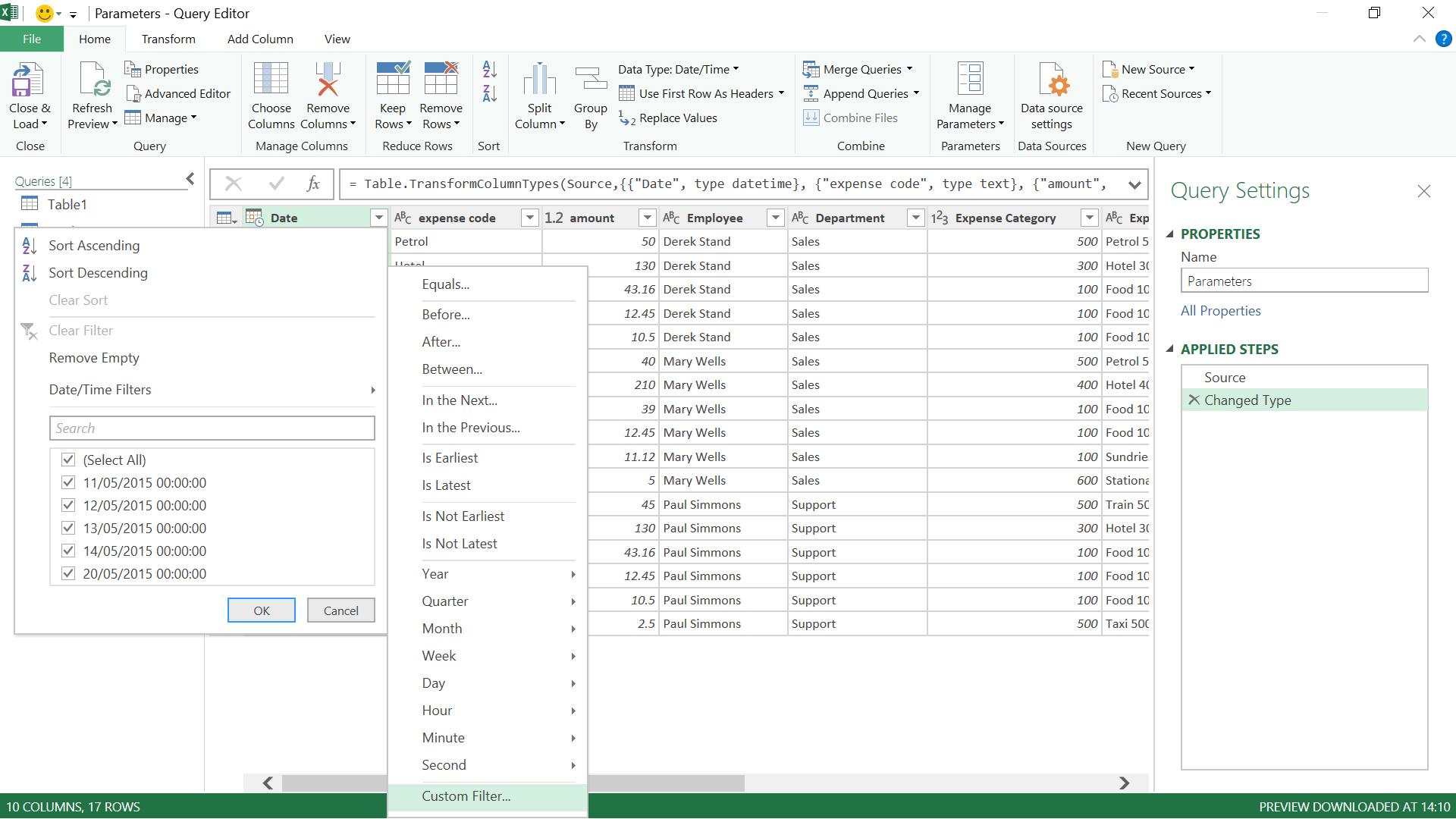
This allows me to filter based on my new parameter by clicking on the datatype icon between the values.
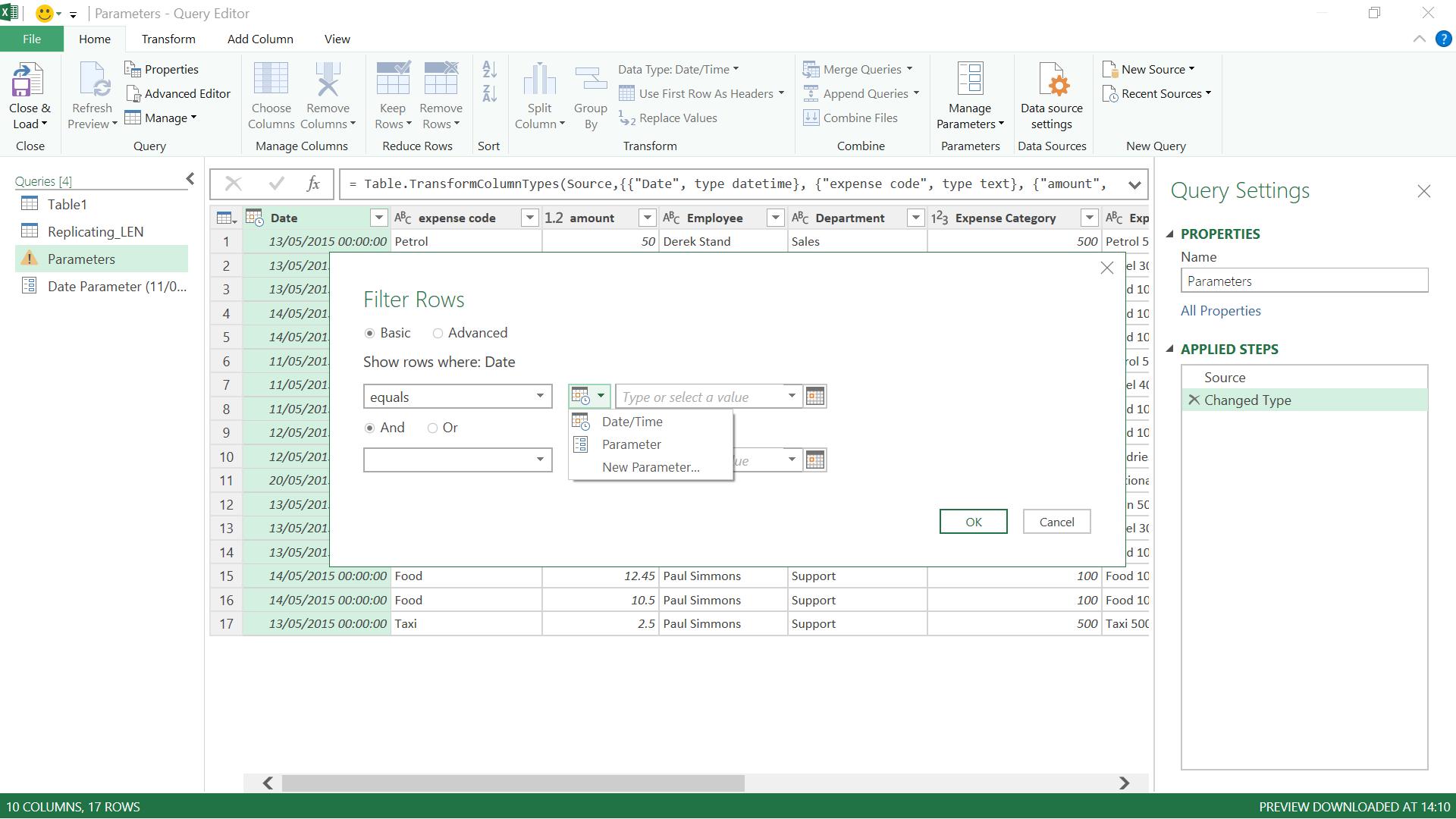
I think it is useful that I can also enter new parameters from here. However, this is not an option to enter the first parameter in the workbook, as the datatype icon is not available if there are no parameters. I choose my parameter and click OK.
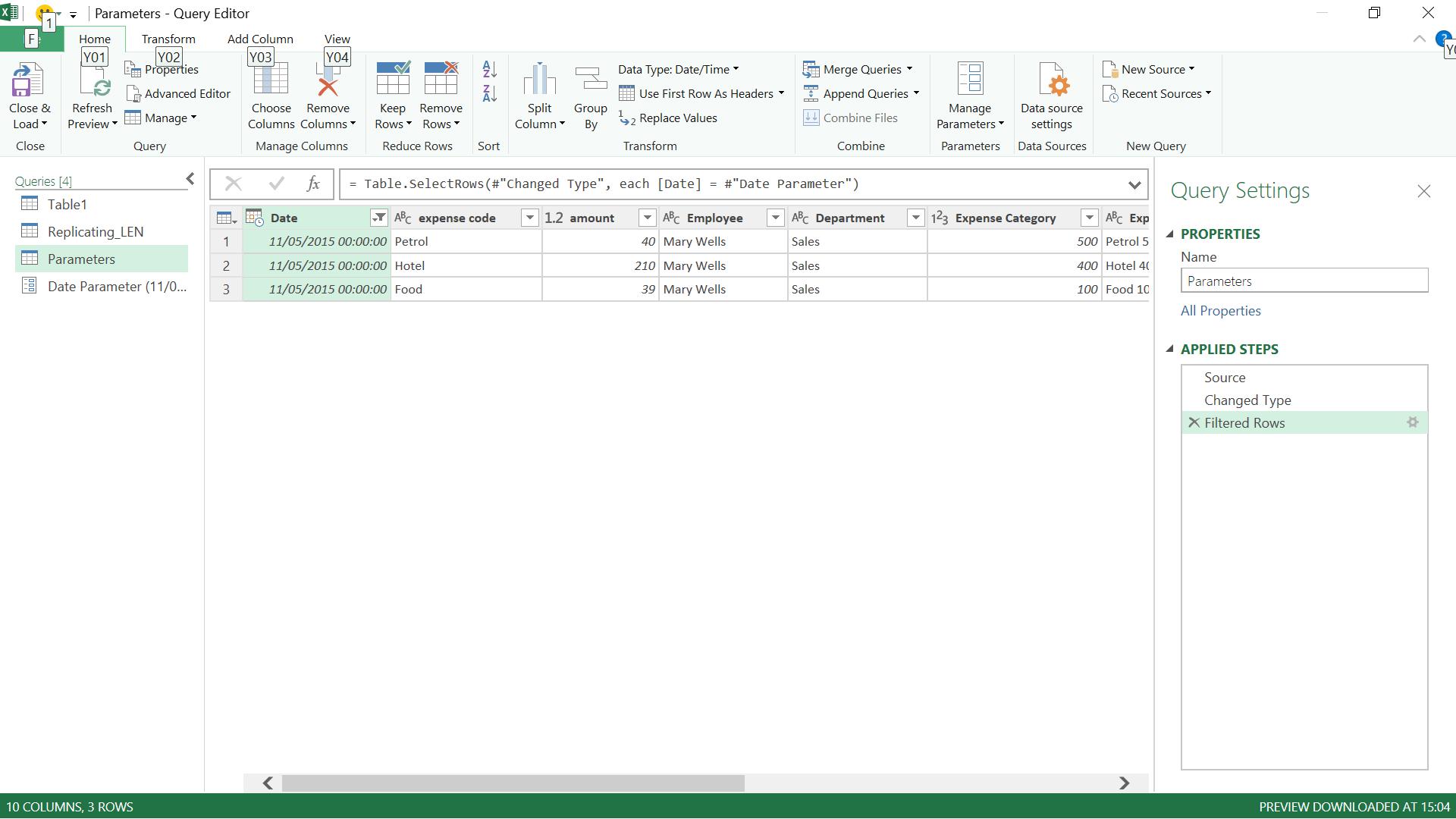
My current value has immediately been applied to the filter. In order to change my parameter, I can see it in the left-hand pane along with the current value. Another nice feature is that if I hover over my parameter, the description I entered appears so I can be sure I have the right one. I click on my date parameter. Since I have chosen to allow any value, I change it to another date:
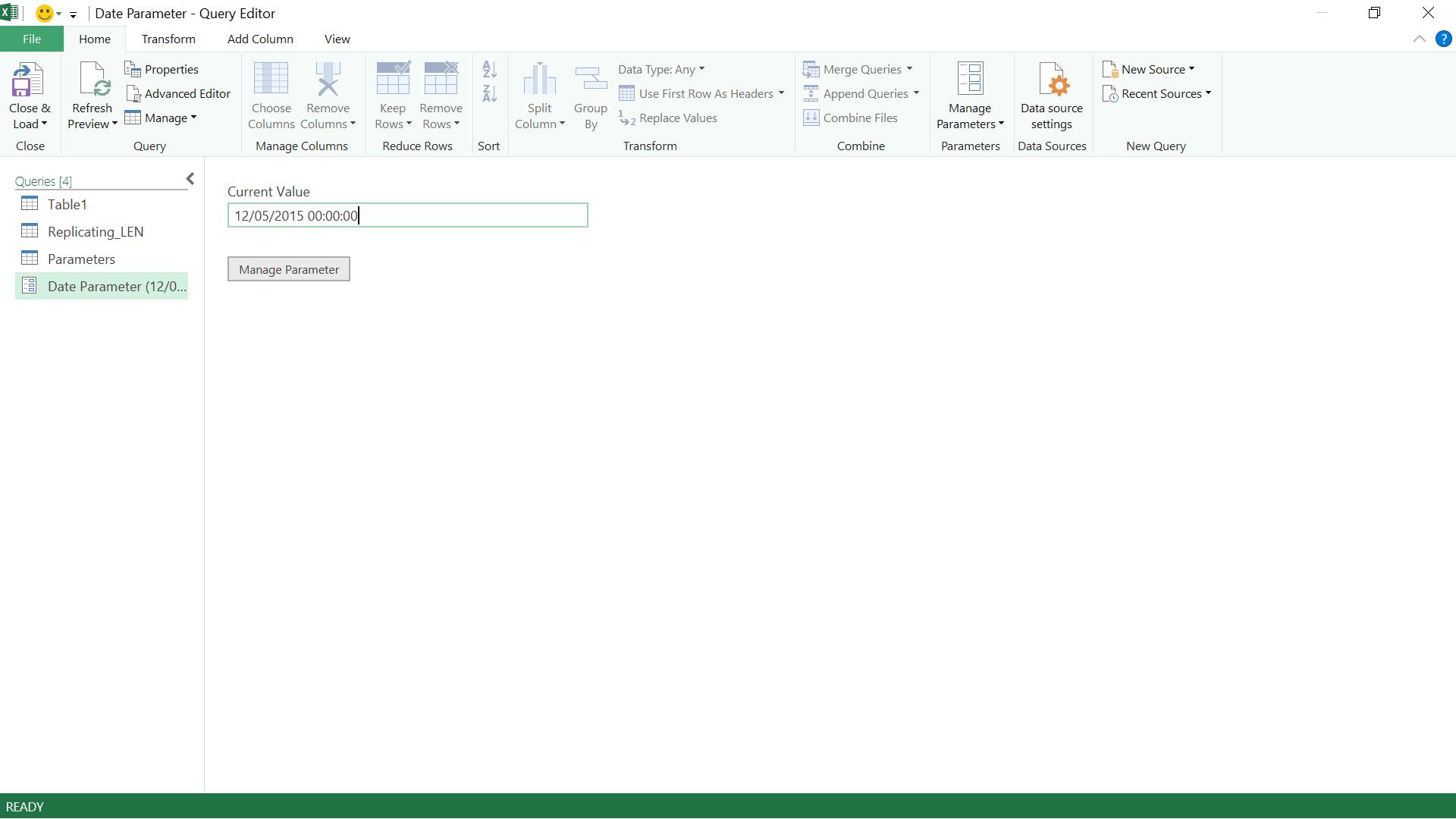
If I return to my Parameters query, my parameter change has been picked up by the filter and it remains in the same step ‘Filtered Rows’, since the step refers to my parameter:
= Table.SelectRows(#”Changed Type”, each [Date] = #”Date Parameter”)

However, as I mentioned earlier, since I have allowed any value, I can pick dates which will return no data. To prevent this happening, I can use a list.
I return to my parameter screen by choosing the option ‘Manage Parameter’, and choose one of the list options, ‘List of values’. I can enter a series of dates to create my list. Power Query will only allow me to add valid dates (Date/Time datatype) to this list:
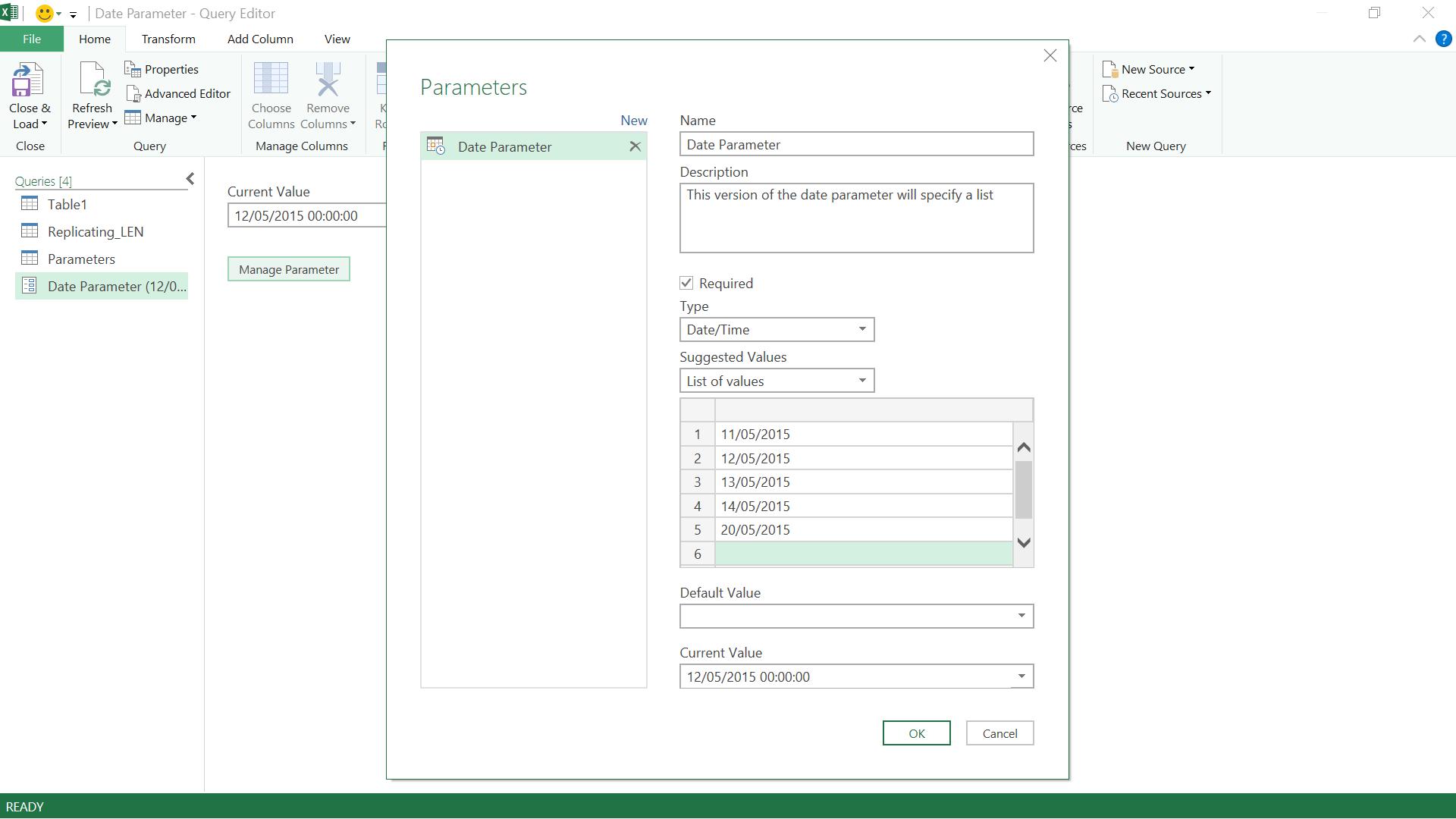
I check how the parameter entry works now.
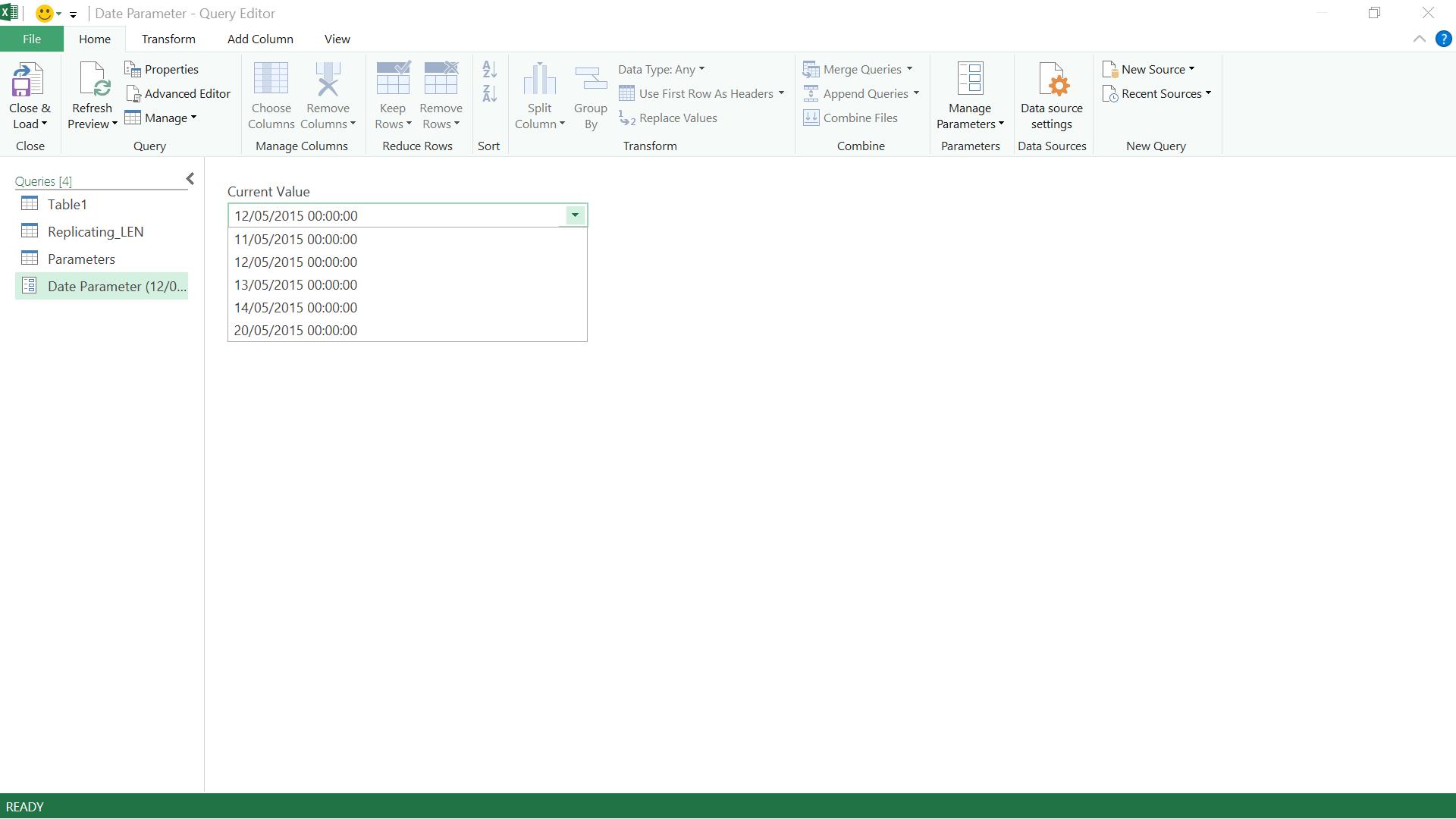
This time I can only pick from the dropdown, which means that I will always select at least one row when I change the parameter used in the filter.
Want to read more about Power Query? A complete list of all our Power Query blogs can be found here. Come back next time for more ways to use Power Query!

